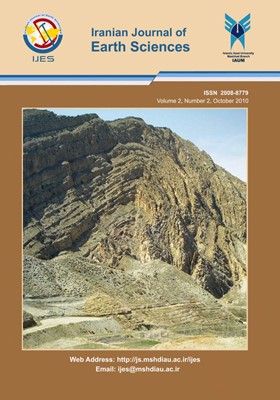Using Wind Data to Predict the Risk of Volcanic Eruption: An Example from Damavand Volcano, Iran
Subject Areas : MineralogyM. Mortazavi 1 , R.S.J. Sparks 2
1 - Department of Geology, Faculty of Sciences, Hormozghan University, Minab Road, Bandar Abbas, Islamic Republic of Iran.
2 - Department of Geology, Faculty of Sciences, Hormozghan University, Minab Road, Bandar Abbas, Islamic Republic of Iran.
Keywords:
Abstract :
Damavand volcano is located 60 km to the East North- East of Tehran. It is a dormant stratovolcano outcrop in the Alborz Mountains of northern Iran and is the highest mountain (5670 m) in the Middle East and West Asia. Mazandaran Province, one of the most populous provinces by population density, Semnan and Gorgan provinces further east are neighbours of the Damavand. Volcanism in Damavand goes back to at least 1 Ma year ago and the latest eruption occurred 7000 years ago. Tephra dispersal in volcanoes strongly depends on atmospheric information in particular wind direction and velocity in stratospheric and tropospheric levels. We present an analysis of wind data to assess the hazards that would result from tephra fall in the cities and provinces neighbouring Damavand. Atmospheric data were provided from the Meteorological stations at Mehr-Abaad airport, Wyoming University and global data sets. We examine wind data from 17 standard pressure levels which cover from 5700 meter (Damavand peak) to 31 km above sea level. If Damavand moved into a state of unrest then a major explosive eruption is a plausible scenario that should be planned for. The results confirm that the area to the south and east of volcano will be affected by tephra. Communities around the southern and eastern flanks of the volcano also have high hazard. Wind data also shows the effects of season on dispersal of tephra from a 25 km high eruption column. Tephra dispersal is dominantly towards the east in all seasons for eruption columns up to 20 km above sea level. Mazandran, Semnan and Gorgan providence could be affected in this case. At 25 km- high eruption column and during the summer there are easterly winds; therefore, the tephra would disperse toward the east. In this case Tehran could experience a tephra fall deposit


